6 Factors That Determine a Retail Mall’s Success
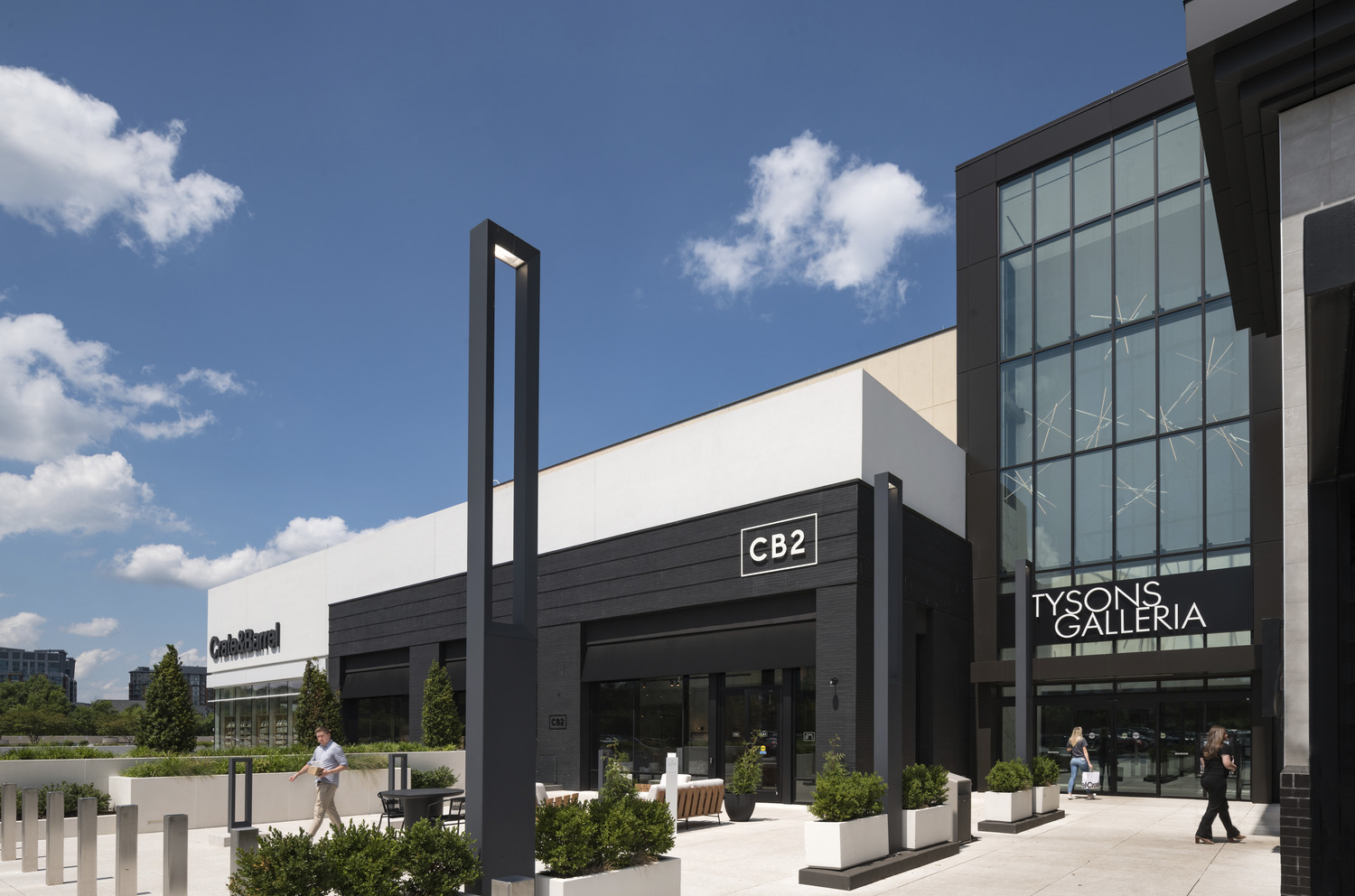
The retail landscape is evolving at an unprecedented pace, driven by technological advancements, the rise of mixed-use developments, a focus on sustainability and changing consumer behaviors. This post explores six key elements that contribute to a retail mall’s success, enriched by industry insights from retail interior design veteran, Principal Donna Childs, and real-world examples from Tyson’s Galleria, a mall recently renovated by TVS.
IT’S ACTUALLY COOL TO HANG OUT AT MALLS AGAIN
Malls have transformed from mere shopping centers into community hubs where guests often seek a dynamic, socially driven experience. For example, the inclusion of diverse dining options enriches the social landscape by offering a broad menu of options for different visitors – from fast-casual to five-star restaurants, an array of dining selections helps to elevate the overall in-person experience of a mall. Another way that malls are maintaining guest engagement is by frequently hosting events or workshops tailored to their target demographic, and creating spaces where people want to mingle and relax.
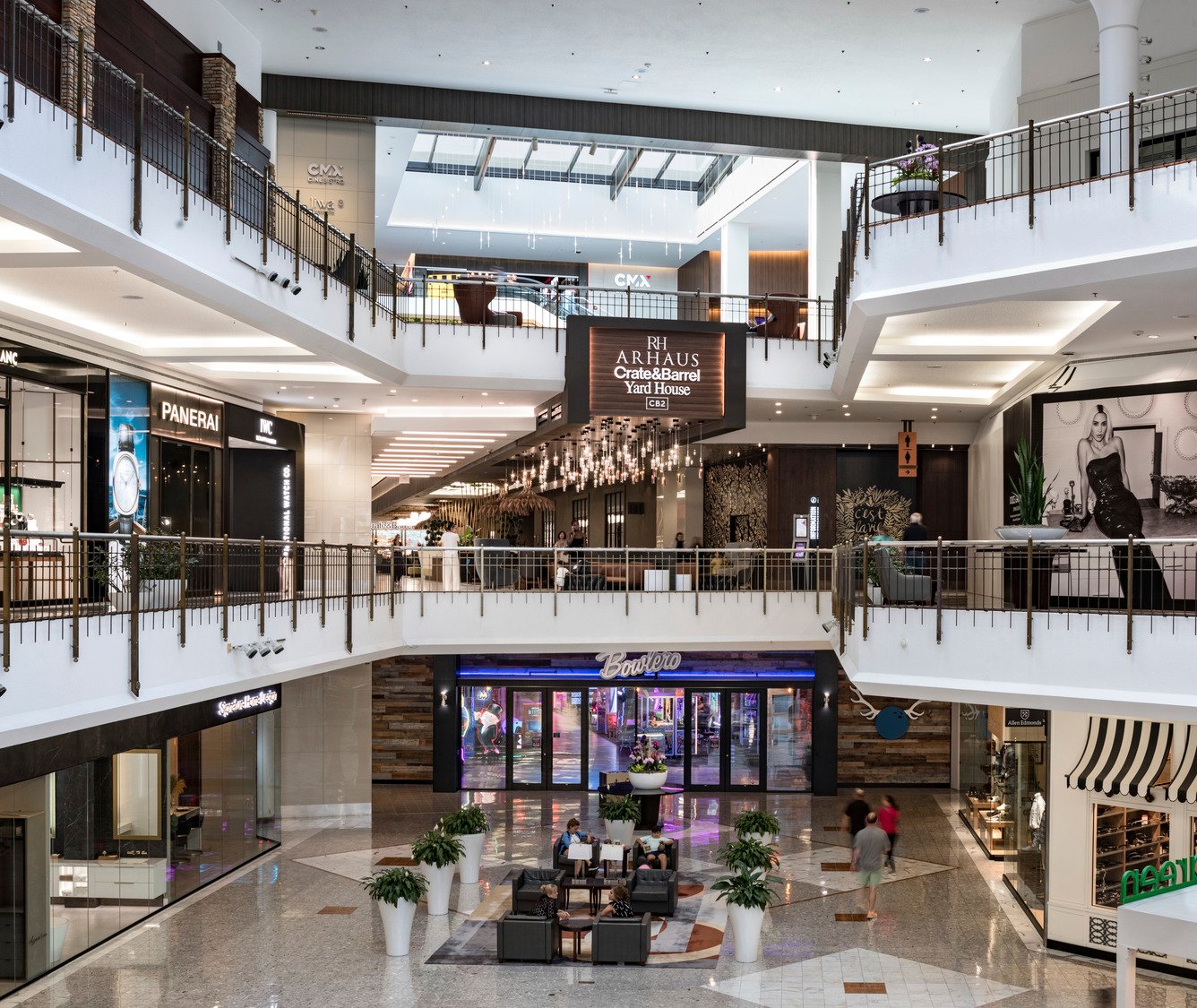
There are spaces at Tysons Galleria, for example, that are often used by students and friends to study and socialize. It seems like we’ve returned full circle to where it’s actually cool to hang out at the mall again. Here, mall walkers are a constant at 8:00 every morning but the design encourages a younger demographic as well. Tysons has become a social hub and a place where people are choosing to spend their free time because people gravitate to places that are stacked with amenities and make their life joyful with great surroundings, great smell and great music to set the tone.
DIGITAL INTEGRATION AS PART OF THE RETAIL AND SOCIAL EXPERIENCE
Guests also expect seamless technology integrations, such as mobile apps that serve as digital concierges offering personalized recommendations and simplified navigation. This integration of developer-driven technology further enhances the customer experience in new, hyper-tailored ways that contribute to a retail mall’s success. As designers, it’s important that we think about how different kinds of technology will be used in the space and design with this in mind. For example, having plenty of tech-friendly spaces available is crucial – can you easily set up your laptop and work? Is there a place to plug in and recharge your device? Design enables the technology – they go hand in hand. TV monitors positioned in the right place can make a difference from an advertiser’s perspective, whether that’s for retail or entertainment purposes to highlight previews to the mall’s movie theaters. This can all help tenants engage in special activities throughout the space.
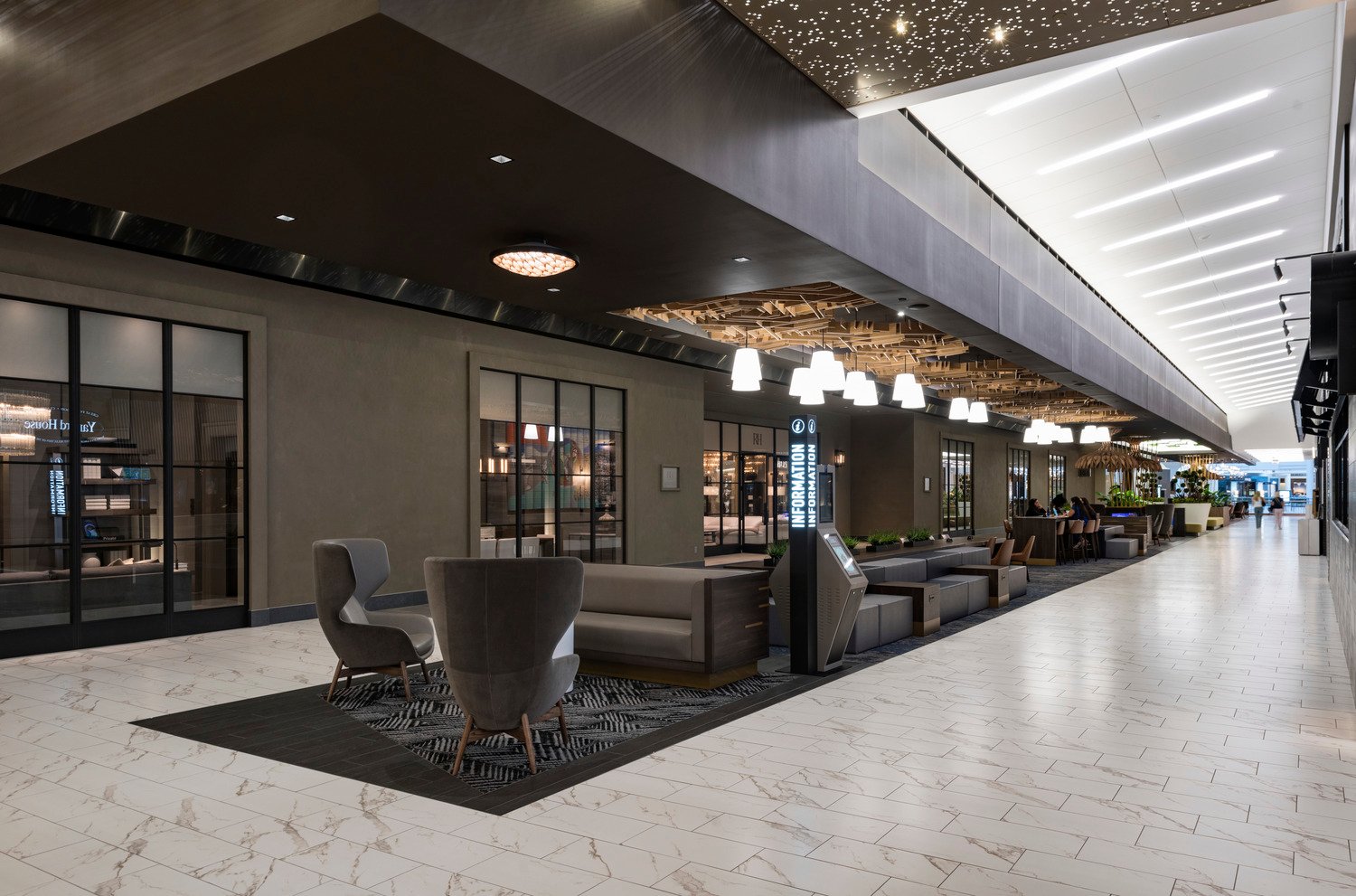
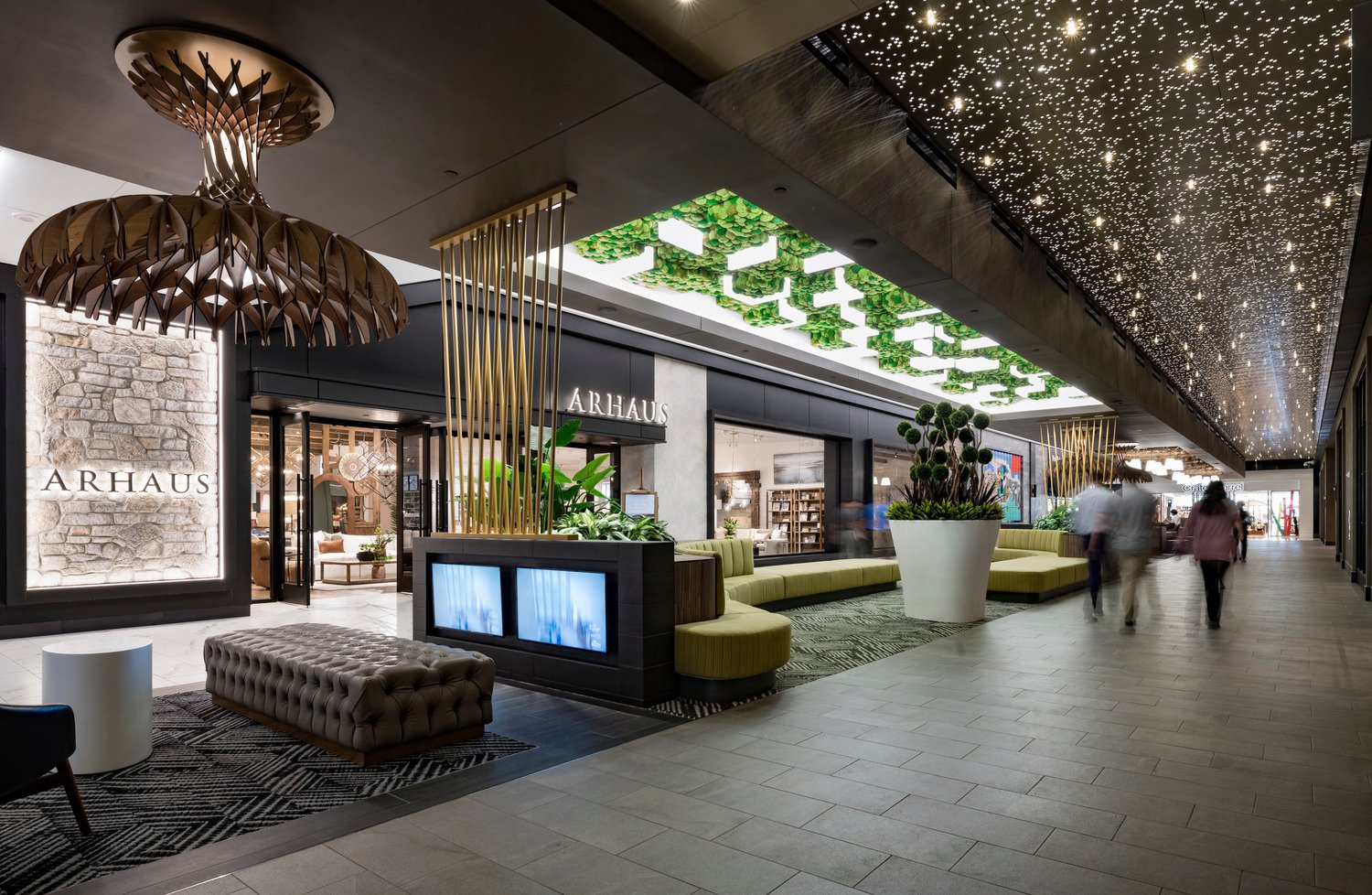
SUSTAINABILITY AND LOCATION
Location remains a cornerstone of the success of a mall. It’s increasingly important that these centers are either easily accessible to public transit, or are part of a bustling urban area or larger mixed-use district. However, location has evolved to include environmental responsibility and a connection to nature. Modern consumers are increasingly eco-conscious and prefer malls that demonstrate a commitment to sustainability. Investments in energy-efficient infrastructure and waste management can set a standard for other malls to follow. At Tyson’s Galleria, stores face both inward and outward, blurring the line between indoor and outdoor spaces. There was also a conscious decision to reuse the building rather than building new at Tysons within the old Macy’s space. While it would have been less expensive to tear it down, redevelopment reused rather than replaced more than 800 tons of steel framing and 2,000 cubic yards of concrete. If torn down and rebuilt, the production of these materials would have resulted in roughly 1.6 million kg CO2 equivalent – the amount of CO2 released and its global warming impact – which is equivalent to the energy used by nearly 200 houses in one year.
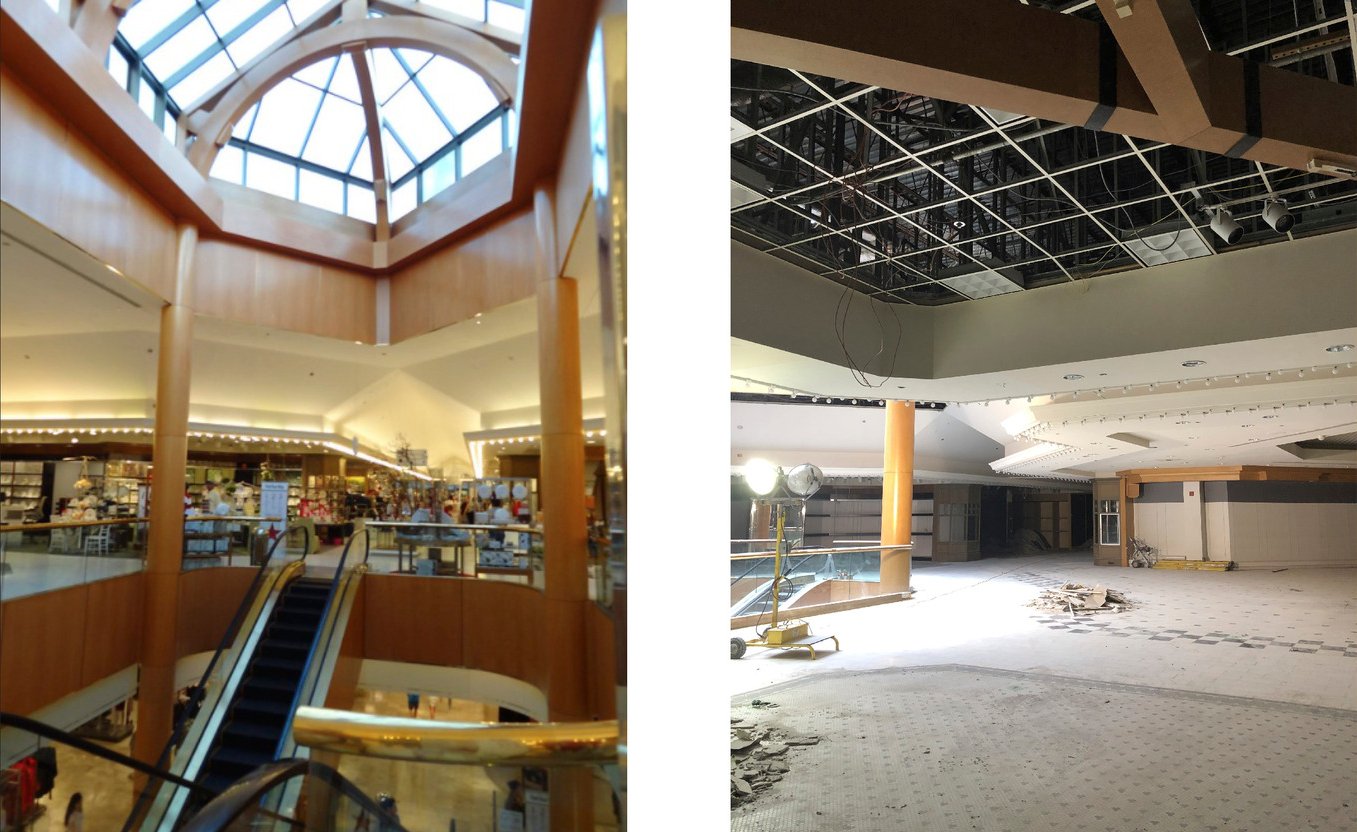
ATMOSPHERE AND DESIGN
Creating a multi-sensory experience is crucial in today’s competitive retail landscape. Elements like lighting, scent and material textures significantly influence visitor behavior and spending. Varied design elements, from strategic lighting to an indoor oasis atmosphere, enhance the overall visitor experience. At Tyson’s Galleria, one side of the mall features dark, rich finishes with lower lighting to encourage visitors to slow down and engage socially. As you move to the other side, there’s a subtle shift to lighter tones and harder flooring, essentially setting the “tempo” of the space. As Donna puts it, the experience at Tyson’s is like “changing the note as you’re walking through it.”
The design of social spaces in retail centers is evolving to meet diverse demographic needs. Different seating options cater to various groups, and intentional design encourages social interaction and media sharing. Creating a social draw is imperative, and savvy designers are exploring spaces that echo the versatility of hotel lobbies. Homogeneous design no longer suffices; variety is essential, and understanding the art of indoor placemaking is crucial for successful mall design.
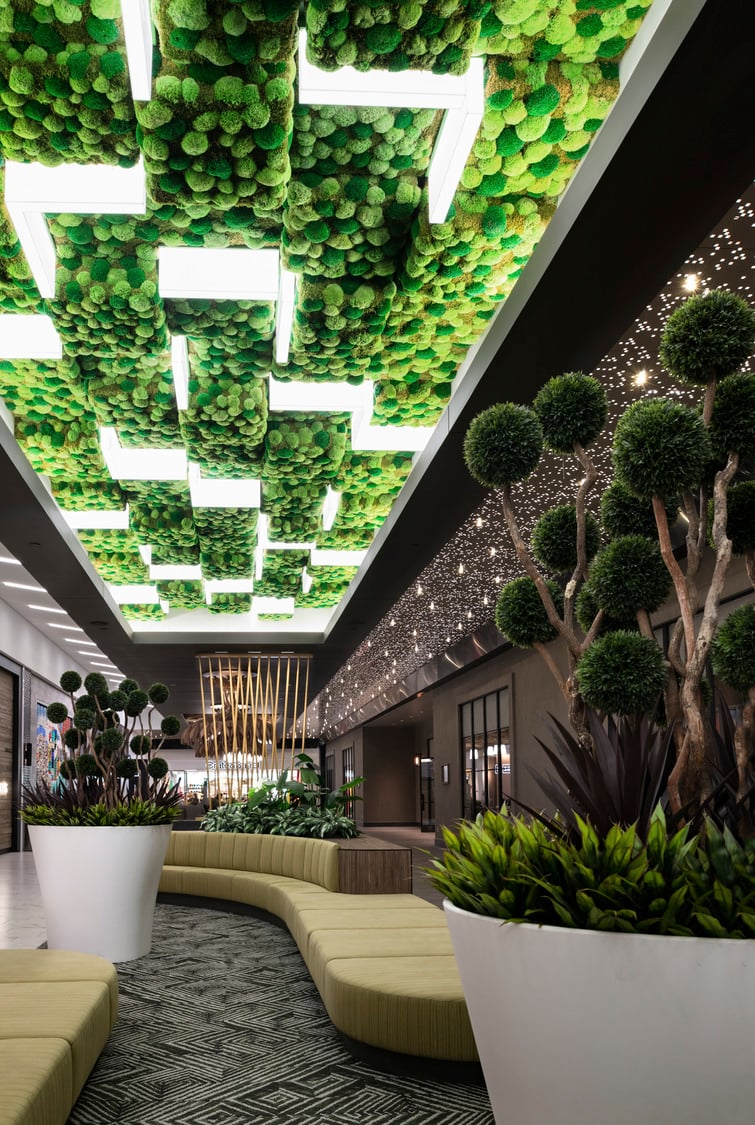
MIXED-USE AND MIXED SPACES
Top-performing malls are often part of larger mixed-use developments that include residential, commercial and entertainment spaces. The residential component naturally attracts visitors, while the mall itself offers a mix of traditional and non-traditional retail spaces. Entertainment options like Bowlero Tyson’s Corner are increasingly vital in drawing foot traffic and enhancing the overall mall experience. Shopping is just one aspect of a retail mall’s success, with a wide variety and mix of programming being essential. In a world where consumer preferences are ever-changing, the adaptability afforded by mixed-use developments and diverse programming is not just advantageous—it’s essential for a mall’s survival and prosperity.
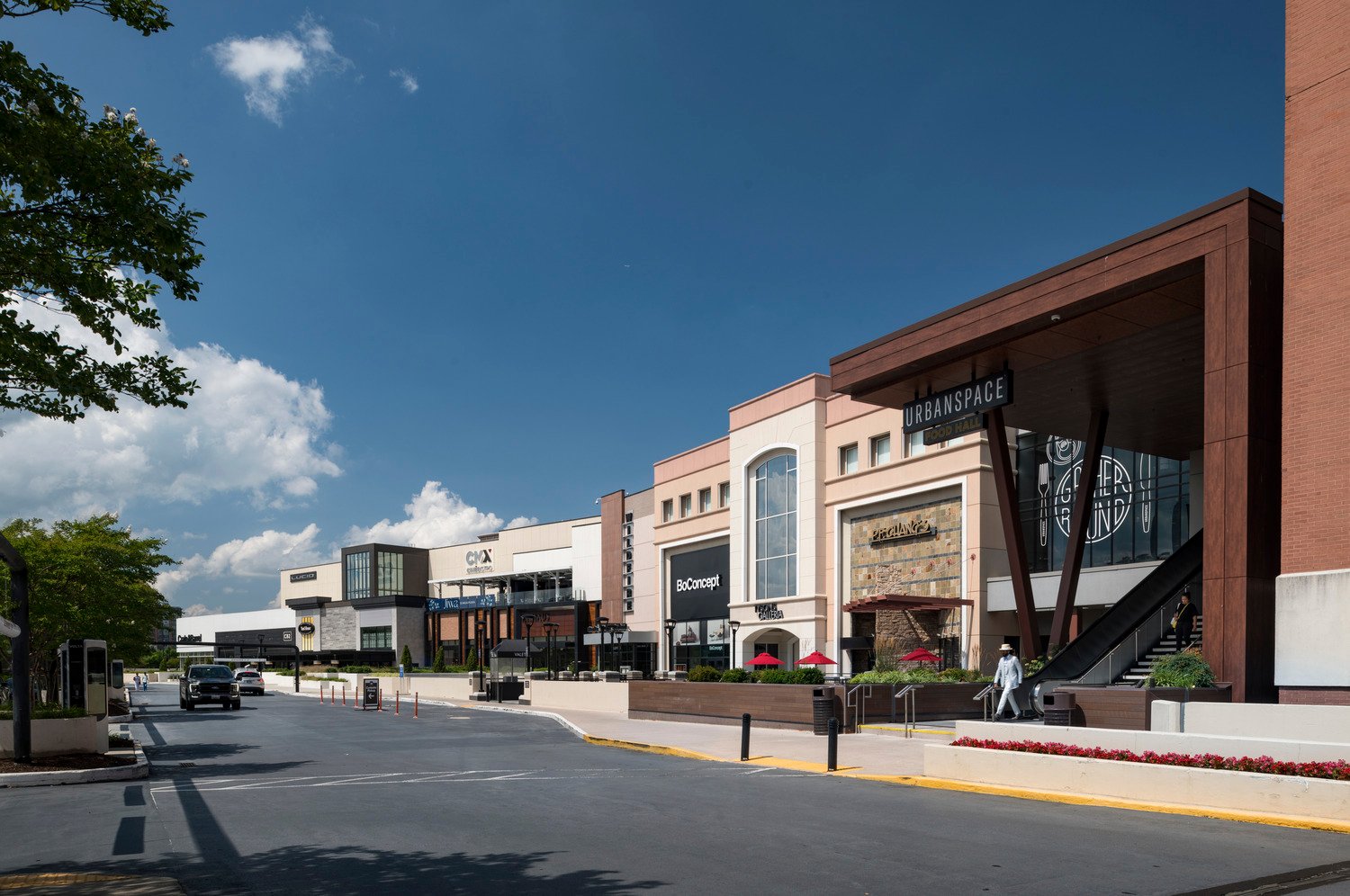
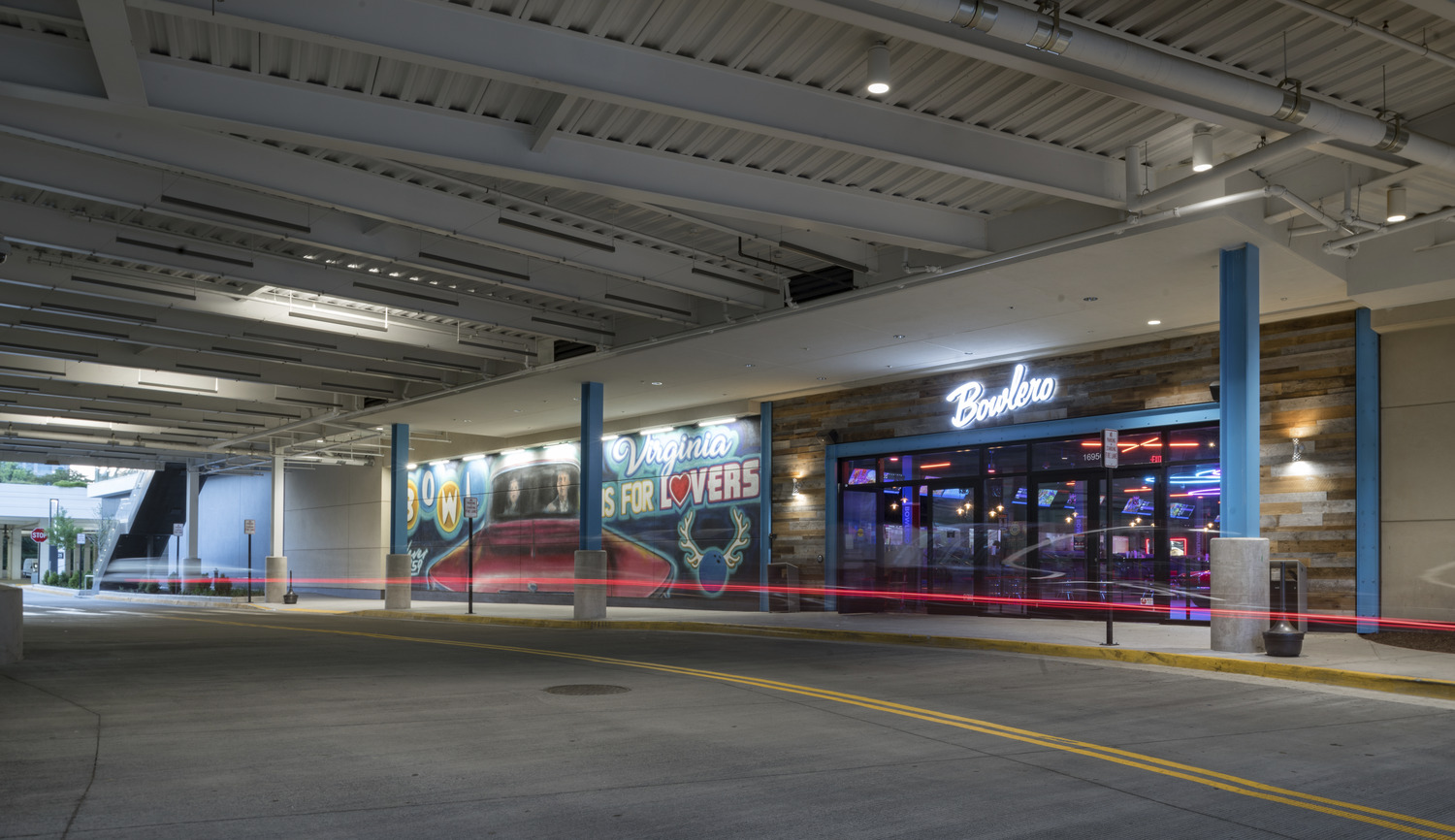
THE FUSION OF HOSPITALITY INTO RETAIL DESIGN
The convergence of retail and hospitality is a significant trend, impacting a mall’s success. Elements reminiscent of extended hotel lobbies add a “wow” factor to the overall experience. According to Donna, this fusion is not subtle but a bold, intentional design choice. Incorporating elements commonly found in luxury hotels, such as plush seating areas and high-end finishes, elevates the customer experience, making guests feel like they are the most important people in the world.
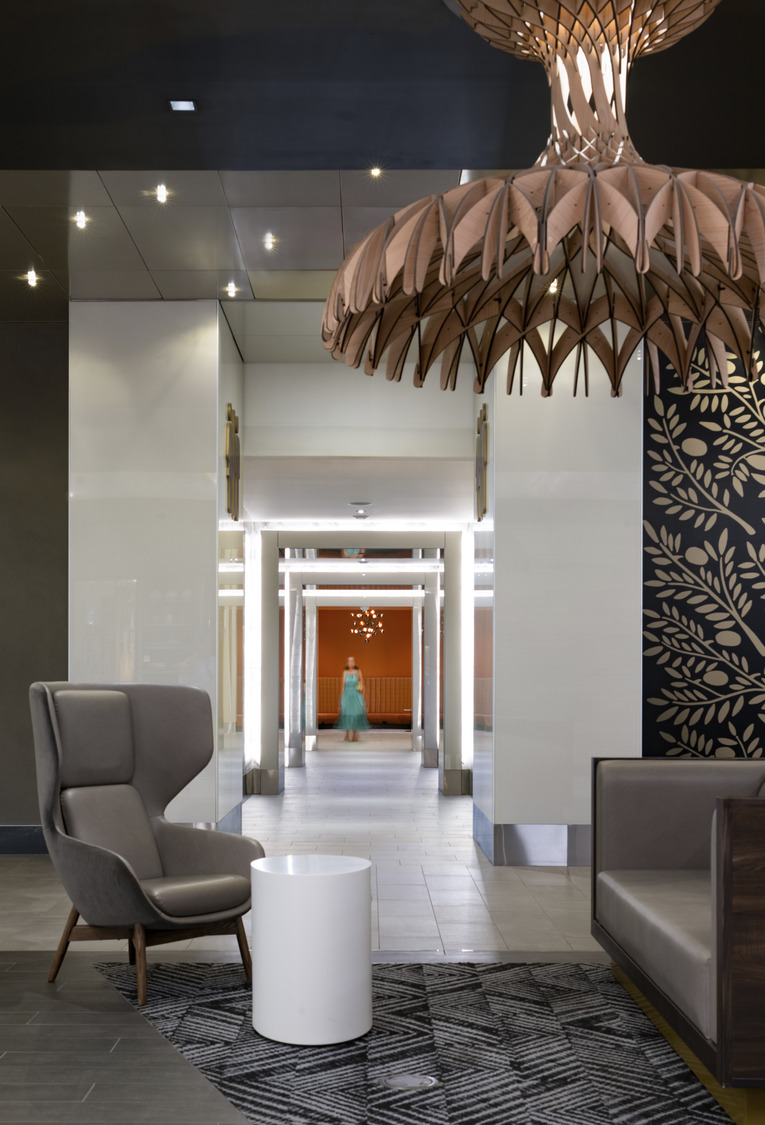
Hospitality-driven environments offer guests a luxe, comfortable experience
TO SUM IT UP:
The key to a retail mall’s success in 2023 and beyond lies in offering a comprehensive, multi-faceted experience that caters to evolving consumer preferences. By focusing on these six elements, malls can thrive in a dynamic landscape. The infusion of high-end hospitality elements, from luxurious restrooms to personalized shopping services, drives the success of class A malls. Strategic location choices, especially those integrated seamlessly with mixed-use developments and natural surroundings, further solidify a mall’s standing as a community hub and destination.
Interested in transforming your retail space for success with cutting-edge architectural and interior design solutions tailored to modern retail needs? Fill out the form below, and we’ll be in touch ASAP.



